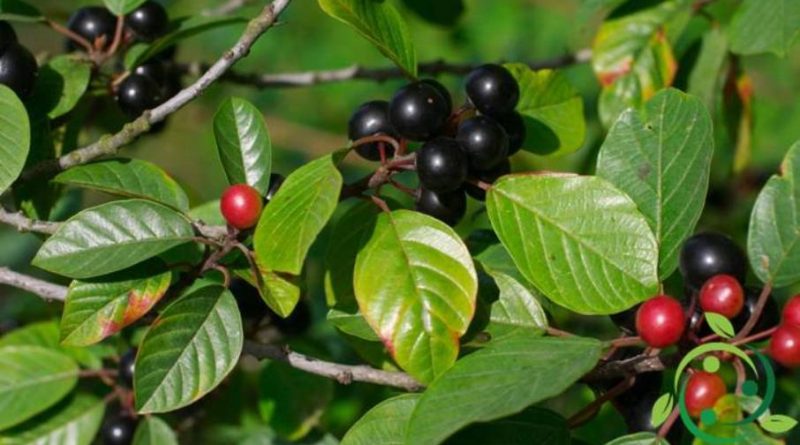Properties and uses of the landslide
Properties and uses of the landslide
The alder buckthorn (Rhamnus frangula L., 1753), whose synomimo is Frangula alnus, is a shrub or arboreal species of the Ramnaceous family, of Eurasian origin. The plant finds its optimal habitat in damp and sandy soils, in lowland or mountain forests, along the banks of rivers or swamps. When it develops in dry soils it takes on a more compact bearing. The plant can reach 2-5 m. tall, with a few alternate branches developed mostly at the ends. The leaves are alternate and deciduous and with small flowers collected in axillary bundles of 2-6, small hermaphrodites (3-4 mm) and a fruit, which is mature, is a small blackish-blue drupe 6-7 mm, spherical, a little wider than long.
In this sheet we will see properties and uses of the alder buckthorn but also the contraindications to its use and the necessary precautions.
Of this plant the most important part, for the active ingredients and its uses is the bark. This contains anthraquinones, glycoprangullin, frangullin, ramnoxanthin, ramnocerine, arachinic acid, other bitter substances; furthermore it is considered possible the presence of a toxin: ramnotoxin.
In the times spent with the coal obtained with the alder buckthorn was produced an excellent smoke pyrical powder, especially in Eastern European countries, while in the Bolognese were used twigs to produce straws for pipes.
The dried bark is used, in homeopathy, for laxative purposes for internal use or as a mouthwash against mouth ulcers or stomatitis for external use.
The use of fresh or not well-dried bark produces side effects such as vomiting, colic and other mild poisoning symptoms. Berries also contain many of the above principles and cause side effects similar to those given by fresh bark.
The most important active ingredient is frangulina, a natural laxative present in the bark of buckthorn, which restores tone to the muscle fibers of the intestine, without irritating or creating addiction. Useful therefore also in case of prolonged use, for example in those suffering from a lazy bowel, or in the presence of fissures and hemorrhoids. This action is due to the anthraquinone glycosides, which, interacting with the bacterial flora, gently stimulate the peristalsis and therefore the evacuation. Substances that also favor the reabsorption of water, sodium and chlorine by the intestinal mucosa, so as to allow a better hydration of the feces.
Like most of the active ingredients, even if coming from plants or parts of them, their use must be performed after careful medical consultation. In the case of alder buckthorn you can have side effects that are related to overdose, which can cause diarrhea and abdominal pain. In any case, it is not recommended to use it for an excessively prolonged time, because, as with all laxatives, it can cause intestinal inertia.

